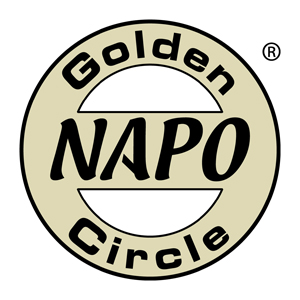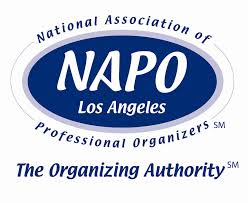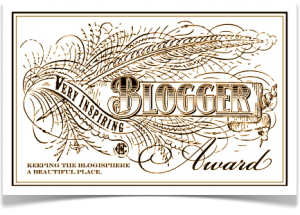The Mass-Media Madhouse
(Press-Central For Handy Soundbites, Useful Info,
And A Good Wet-Your-Pants Laugh)
Home / The Mass-Media Madhouse
(Press-Central For Handy Soundbites, Useful Info,
And A Good Wet-Your-Pants Laugh) / Organize My Drawer / As Published At Organize My Drawer --
Junk Drawer Organization
As Published At Organize My Drawer —
Junk Drawer Organization

Everyone’s got a junk drawer. (Well, except for me — because I live in a 29-foot Airstream and only have two drawers in my home, one for silverware and one for utensils. But you get what I mean.) And there’s nothing wrong with that — as long as it’s organized.
The Value Of A “Miscellaneous” Drawer
Junk drawers have gotten a bad rep within the organizing community — it’s been suggested that if you’ve cleaned out properly, you shouldn’t have any junk that needs its own drawer. A more appropriate name would be “miscellaneous” drawer — containing a lot of random stuff that you truly do use in that area, but that doesn’t easily fit into any other categories. I’m actually a fan of having a “miscellaneous” drawer wherever you need it – one in the kitchen, one in your office, one in the bathroom, if need be.
“Junk” Vs. “Trash”
Unfortunately, a lot of what folks store in a “junk” drawer is actually trash they’ve chosen to hide away rather than throwing it out. The list of offenders is extensive — outdated receipts, business cards for people you can’t remember ever meeting, take out menus from restaurants that closed years ago, junk mail, broken electronics, empty bags, other external packaging, dried up pens, and dead batteries. Clean this crap out, and you’ll actually have room for the miscellaneous stuff you do need to access!
Even A Junk Drawer Can Be Organized
Don’t let the name fool you — “junk” drawer does not mean a mass of clutter and chaos, brimming over to the point that you can barely get the danged thing shut! Even a “miscellaneous” collection of objects can (and should) be well-ordered. That means logical and clearly-defined categories of stuff, each contained and separated from the other, so you can put your hand on anything you want in 30 seconds or less. If your drawer doesn’t live up to this standard, it’s time for a little organizational revision!
Tightening Things Up
One of the biggest enemies of any junk drawer is the perfectly-natural-and-totally-human-yet-counterproductive tendency to throw everything in willy-nilly. Randomly-scattered clutter takes up a lot more space than objects that are contained — so take the time to bundle rubber bands and twist ties together. Roll charger and earphone cords up. Clip piles of papers together. Put collections of tiny items (like buttons or safety pins or tacks) into zippie bags or small lidded containers. You’ll thank me later.
A Home For Duplications
Some organizers frown on owning multiples of a particular item. But if you use (for example) scissors in several different areas, it’s silly to keep moving a single pair from one room to the next. Instead, storing a pair in each room where they come in handy (office, kitchen, craft room, garage, library, bathroom) means less wasted time (hunting for that one pair) and reduced frustration (when you misplace it). You can do the same with any other “essentials” that serve multiple purposes in your life.
Segregating Action Items
I rarely tell my clients “never store that in a junk drawer” — your drawer, your rules. That having been said, NEVER store to-dos in a junk drawer! They’re too easily forgotten when hidden out of sight like that. Instead, keep paper to-dos in a file box (with a folder for each action, like “to read” or “bills to pay”) — and physical objects (fix-its, pictures to hang, stuff that needs returned to the store) in a “project bin.” Empty these regularly — once a week for the paper, maybe once a month or quarter for projects.
What Doesn’t Belong
Over time, you’ll find that a lot of items from elsewhere in your life have migrated their way into your junk drawer — but that doesn’t mean they get to stay there! Your junk drawer is only (and I mean ONLY) for items that a) you use regularly in that location, and that b) don’t have a reasonable home elsewhere. Try very hard to find a logical permanent spot for your miscellany first (in your hardware box, in the medicine cabinet, with your office supplies, in your file system). The junk drawer is a last resort.
Collecting Up Your Junk
So how do you know what SHOULD go in your junk drawer? My suggestion is that (as you organize the other drawers and spaces in a particular room), you set aside a box for collecting up all those “miscellaneous” items that don’t belong with any other category stuff. At the same time, keep a notepad nearby and make a list of things you’re always needing in that room, but have to go elsewhere to find. Consolidate, and you’ve got a complete accounting of what your junk drawer should contain.
Creative Categorization
There are no hard and fast rules when it comes to your junk drawer — what you decide to keep on hand will be totally different from what another person chooses, and that’s okay! But what does matter is how you subdivide your space. Just make sure that any items you’re assigning to a group make sense together. If you’re having trouble thinking up categories, stick with essentials like “writing implements,” “office supplies,” “kid stuff,” “multi-media,” “repair,” “medical,” and “toiletries.”
Evicting Overflow
Just because we’ve created a space for miscellaneous items, that doesn’t mean you need to put every SINGLE miscellaneous item you own in that space! There is actually a limit to how much a junk drawer can hold — once the contents of your drawer organizer start spilling over, it’s time to clean out. Only keep as much of an item (like paperclips or emery boards or individually-wrapped mints) as you will use in your drawer. Send the rest to a “bulk storage” area, and refill as needed.
Click here for reuse options!Copyright 2001 RamonaCreel.com
 PS: Wanna instantly rack up some serious virtual cred? I've made it easy for you to share this content with your social networking friends, e-mail it to your peeps, or republish it in your own blog (thereby showing off how smart you are) with these links.
PS: Wanna instantly rack up some serious virtual cred? I've made it easy for you to share this content with your social networking friends, e-mail it to your peeps, or republish it in your own blog (thereby showing off how smart you are) with these links.
(iCopyright widget here)
"I Have More To Say About This... No Surprise!"
If you would like to reprint this page, please contact me
Comments are closed.





